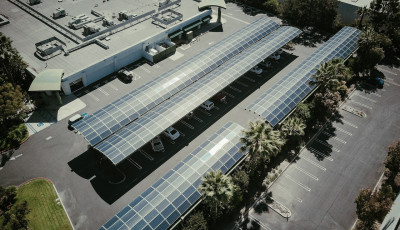Article Summary:
- What is green software?
- How is the industry embracing green software development?
- Requirements of green software engineering
- Facets of green software design
- Why green software testing and deployment matters
- CIOs and green software strategies
Greenhouse gas emissions from software are increasing, with the ICT industry set to reach a 14% share of global emissions by 2040, from 5% in 2022. Furthermore, existing software development approaches only sometimes offer the best sustainable outcomes.
Emerging as a new paradigm within software engineering, green software development places paramount importance on integrating energy-efficient and waste reduction patterns, practices and methodologies across the entire delivery cycle.
Green software development carries substantial potential for enterprises aiming to curtail their carbon emissions and alleviate the financial burdens tied to outdated, ineffective legacy technologies and workflows.
However, the industry’s comprehension of green software engineering appears inadequate. Despite its evident advantages, this approach continues to linger on the periphery as numerous organizations prioritize augmented developer output and speed, often conflicting with the core principle of green efficiency.
Nevertheless, a study by Accenture found that organizations that integrate their business, technology, and sustainability goals “are seeing returns on their sustainable technology investments in the form of improved financial metrics, ESG goals, customer experience, innovation, software quality, or hiring ability.”
Many enterprises have ambitious climate goals, but the success in realizing these ambitions has often eluded CIOs and CTOs. One major obstacle to this success is the need for more knowledge about green software and the strategy with a roadmap to getting started. The situation has been further complicated by misconceptions and misinformation, obscuring the proper course of action for tech leaders and CIOs.
What is green software?
Green software, also known as sustainable software, is designed, developed and implemented to reduce energy consumption and have minimal environmental impact.
Green software engineering considers software patterns, practices and architecture, data policies, hardware and data center design, electricity markets and climate change. Sustainable software architecture is never bloated or over-engineered, thus it emits less carbon emissions and through its efficiency benefits end users.
How is the industry embracing green software development?
The industry’s comprehension of green software development is still in its infancy but expanding, led by innovative companies like Helmes. The ICT industry consumes 13% of the world’s electricity and its footprint is increasing fast. Engineering practices need to be adjusted.
While these initiatives lay the groundwork, concrete implementation guidance must still be provided for sustainable and green software developers.
The most challenging practical aspect of green software delivery is measurement, particularly in cloud environments. However, these solutions offer varying levels of detail and transparency. Notably, they often omit embodied carbon – the proportionate share of carbon emissions associated with the manufacturing and disposal of hardware, a crucial metric.
Nevertheless, cloud measurement stands as a key component of green software development. It facilitates tracking energy and carbon expenses in the iterative “test and learn” cycle. With cloud measurement, comprehending the complete extent of emissions and the efficacy of any enhancements becomes easier.
Delaying consideration of emissions until the measurement is attainable proves counterproductive. Suppose the software needs to be better designed and developed by factoring in emissions. In that case, it might result in an unoptimized solution that is burdensome to refine due to inflexible architectural choices.
Contributors to software emissions
The most conspicuous origin of emissions lies in the hardware’s energy consumption at each software layer. These emissions stem from the energy used by hardware, encompassing its manufacturing and eventual disposal.
Moreover, an array of support systems is entailed in both the development and operation of software. These encompass elements such as:
- Continuous delivery pipelines
- Automated testing
- Data Mining
- Analytics
- Idle compute
- Network transfer
- Storage
- Monitoring
- Logging
- Backups
- Pre-allocated, failover, or redundant resources.
The impact of these factors on overall emissions can be substantial, dependent upon the software’s design. For instance, retaining extensive data over extended periods or transmitting streaming videos to numerous users can notably increase emissions.
Requirements of green software engineering
Software bloat is typical, especially in enterprise organizations. Oft-quoted Standish Group research claimed that 64% of enterprise software features are rarely (19%) or never (45%) used.
Whilst these figures have been a recurrent topic of discussion and scrutiny within Agile communities, and although they might be considered somewhat dated, our observation indicates their continued relevance within numerous enterprises. Sustainable software engineering is undeniably aimed at waste reduction, exemplified by practices like lean software development.
Nonetheless, these processes are not universally embraced within enterprise settings. Consequently, software development frequently results in bloated architectures and unnecessary complexities.
Developing more streamlined software offers a direct avenue to curbing both build and operational emissions. However, this approach will not succeed if organizations swap one rejected feature for another; the crux is formulating “more minimal software.”
Organizations unlock several additional advantages by prioritizing the creation of such lean [green] software. They will need fewer refactorings, the software’s operational management will be smoother, costs will be lower, complexity will be reduced, and creation will be more amenable to compliance and eco-friendly enhancements.
Moreover, it will expedite the delivery of your software to users. The surplus capacity in your team can be directed towards enhancing the efficiency of what is already built rather than the mere accumulation of new features. You might even be able to retire features that are no longer utilized effectively.
However, within an enterprise setting, this pursuit can be remarkably intricate. Numerous stakeholders harbor diverse perceptions of what constitutes minimal viability regarding features and non-functional requisites. This entails an array of business stakeholders, user representatives, and teams vested in non-functional aspects like risk, regulation, and security.
Frequently, requirements are presented as unequivocal “must-haves,” and stakeholders often exaggerate non-functional necessities. The CIOs role is to encourage stakeholders to scrutinize their perceived requisites and illustrate how a more minimalistic approach can yield more substantial benefits with a reasonable compromise.
Facets of green software design
Green software architecture
Architectural choices wield significant influence over software carbon intensity, and they tend to be some of the most foundational yet challenging decisions to alter later on. When the software is used, these decisions sway over hardware utilization, operational efficiency, and data transmission across networks.
To ensure environmentally conscious decisions, software architects must familiarise themselves with green principles and invest time in comprehending how to integrate these concepts into their green software designs. Consequently, green software architects must devote effort to evaluating the potential emissions impact of various options, sometimes requiring hands-on experimentation when differences are not evident on paper.
The eight green principles and the three categories of emission reduction actions proposed by the Green Software Foundation are valuable tools in this process:
- Energy Efficiency: Actions taken to make software use less electricity to perform the same function.
- Hardware Efficiency: Actions taken to make software use fewer physical resources to perform the same function.
- Carbon Awareness: Actions taken to time- or region-shift software computation to take advantage of cleaner, more renewable or lower-carbon sources of electricity.
Considering these factors aids in making environmentally mindful decisions. However, the assessment is often imprecise, particularly when quantifying the emissions impact on a larger scale, especially before the software is operational and measurable.
Lean software architecture
Beyond curtailing waste through feature limitation, creating minimal software entails adopting frugal architectural designs. Usually, software applications can be tailored for theoretical future needs rather than optimally structured to serve current, practical scenarios.
Scrutinizing the necessity of non-functional requirements (NFRs) aids in constructing minimalistic architectures supported by a development culture that esteems simplicity.
Similar to streamlined requirements, minimalistic and low-resource architectures offer a host of other merits beyond addressing software carbon intensity, including decreased costs, reduced complexity, and minimized maintenance efforts.
Green software development advantages = environmentally responsible
Transitioning from green architecture to green software development entails a shift towards designing and crafting efficient code, thereby reducing energy consumption.
In software development, the principles of green software development revolve around striking a balance between simplicity and efficiency. This is highlighted in the architecture section and is closely associated with cost and sustainability. CIOs must note that time efficiency and software carbon intensity share a strong connection, but are not always linearly correlated (as in in parallel-processing).
Software development is streamlined
Software streamlining involves leveraging existing development processes that address broader challenges and tailoring the output to specific needs rather than crafting entirely new code.
This approach is pivotal for productivity and sometimes security in enterprise-level engineering but can lead to a trade-off in efficiency. Herein lies the green software developer’s dilemma – discerning when the impact of reduction outweighs its benefits.
Software streamlining is taking what you already have and making it work better instead of starting from scratch. This is good for getting work done more quickly and can make things more secure if you’re working on a big, complex project like a large company.
However, there’s a catch.
Sometimes, tweaking what you have can make the software less efficient overall. Imagine you have an old car and adding modern features to it. The car may become more comfortable and feature-rich, but it might also start using more fuel because it wasn’t initially designed for all these additions.
So, people trying to make software greener—less wasteful in terms of energy and resources—face a tough choice. They have to figure out when it’s worth it to streamline by making small changes and when those changes end up using more energy than they save.
Green software engineering is adaptable
As emphasized, software development involves various trade-offs, and quantifying the carbon intensity impact of a development decision can often prove unattainable.
Nonetheless, certain green software development principles, like the Single Responsibility Principle or Composite Reuse Principle, advocates separating code units based on responsibilities and reasons for change.
This principle ensures that existing code remains untangled from other segments when opting for more efficient processes. Integrating these principles becomes vital in composing green software, paving the way for more efficient, sustainable, and adaptable software development.
Incorporates carbon efficiency into quality procedures
Despite many software engineers asserting their proficiency in software design and maintainability, numerous software systems grapple with issues in these domains, often harboring concealed technical debt.
At Helmes, we imbue quality processes into our delivery ethos and culture to combat technical debt.
Addresses sustainability debt
As technical debt is inevitable in projects, sustainability debt also accrues, whether by design or accident. Awareness of sustainability debt might stem from discovering alternative, more suitable technologies or insights initially absent during feature development. As hardware becomes more efficient over time (Moore’s Law), software becomes less so.
Harnesses profiling tools and static analysis
Performance profiling tools can be employed during development or real-time operation. These tools, whether intrusive or non-intrusive, unveil the impact of loads on different system components, spotlight bottlenecks, and reveal suboptimal code segments.
Whilst they are often locally executed or integrated into a performance test suite within a dedicated environment, they can also function continuously during production and connect with automated alert systems.
Incorporating these elements into your system and its related delivery – even without stringent performance prerequisites – can yield environmental advantages.
Why green software testing and deployment matters
Beyond validating software functionality, testing serves as a mechanism for meeting our non-functional requirements. Considering emissions as one of these non-functional requirements prompts the question: is it a suitable criterion for holding ourselves responsible for our software’s energy consumption and emissions?
What signifies a successful test outcome or a failure?
Frequently, quantifiable metrics to determine an emissions pass/fail are elusive, particularly until the green software industry achieves a higher level of maturity.
Even with this absence of quantification, CIOs should still pursue measurement, establish baselines, and comprehend the influence of novel features and releases on the broader emissions landscape.
Measuring green software development
Integral to the principles of green software development is the capacity for continual testing, learning, and enhancement. The principles of measurement and optimization are a natural part of this journey.
Cultivating an effective feedback loop necessitates deploying appropriate tools and metrics, facilitating comprehensive insights into the application, hardware, and supporting systems. Simply put, tracking user interactions, hardware efficiency, energy consumption, and emissions, by:
- Identify green opportunities: By scrutinizing these observations, we can discern prospects to implement green actions, as outlined in green architecture. These findings can be integrated into the backlog for future incorporation. For instance, recognizing chances to consolidate computing resources, aptly sizing environments, pinpointing emissions hotspots, and strategizing refactorings to mitigate them.
- Enhance user-centric focus: Understanding application usage patterns assists in concentrating on areas that users find most valuable, enabling the retirement of underutilized features—the insights gleaned from user activity aid in creating more resource-efficient software grounded in real-world utility.
- Quantify the impact of changes: Gauging the consequences of modifications and optimizations post-release is pivotal. Estimating the precise effects of alterations and optimizations before deployment and real-world usage can often be challenging. This holds particularly true within enterprise environments with infrequent production releases. By accumulating data, we can accurately assess the actual changes. Eventually, this data can be leveraged to attribute a sustainability “value” to enhancements, potentially forging a comprehensive perspective of the cost-value nexus.
Retrospectives and knowledge exchange
Given the developing processes of green software development and delivery, conducting retrospective assessments of the strategies adopted and implemented changes is paramount. This process aids in comprehending the value yielded by investing in green approaches and pinpointing the patterns and practices that have demonstrated efficacy.
Retrospectives, a cornerstone of Agile methodology, empower Helmes team members to exchange insights regarding effective methods and areas requiring improvement. They also facilitate the formulation of action plans to enhance project delivery incrementally.
As a fledgling domain, green software delivery stands to gain from inclusion in retrospectives, fostering dialogue within teams. This platform facilitates the identification of successful practices and patterns. It encourages their dissemination across your organization or, ideally, within the broader green software community.
CIOs and green software strategies
The biggest question you can ask is, “Do I need this?” Followed by “How do I get started with green software development?”
Whether you even need to include the features you build, the architecture you design, the code you develop, and the tests you perform, thus, minimalism is crucial to developing green solutions.
Nonetheless, the chief hurdle in fashioning greener software is arguably dual-fold:
- The dedication demanded to applying these principles and embed green software architecture.
- Discovering a green software partner who ensures frugal expenditures while embodying the ethos of green software development.
Once CIOs decide to dedicate themselves to applying green software engineering to their organizations, the State of Green Software survey reveals what green software principles they like to incorporate:
- 56.54% optimize code by measuring its energy consumption/carbon footprint
- 44.59% minimize the amount of data their software sends/receives
- 35.2% maximize the utilization of their hardware
- 24.73% create energy-efficient software
- 20.93% make software that can run on older devices/hardware
- 11.08% create software that is carbon-efficient
- 8% make carbon-aware software
Deciding to take on these principles and accept the trust of a credible partner will be the real test of whether enterprises intend to invest in developing more green software.
Helmes educates and advises on green software strategies, specifically, how to make greener choices and what levers to use, and put in place green measurement systems to quantify energy consumption.
The Helmes Way principle states that useless software is a waste. Typically our strategy is to reduce energy consumption, reduce digital waste, and apply the below green software strategy levers:
- Optimize the number of end-user devices
- Adopt energy-efficient end-user devices
- Optimise utilization of end-user devices
- Increase the product life span of end-of-user devices via sourcing changes
- Consolidate application landscape factoring in footprint (retire)
- Rightsize data center’s computing needs
- Adopt energy-efficient components incrementally (sourcing policy change)
- Adopt energy-efficient components (direct replacement)
- Optimise PUE3 by incrementally improving current data centers (excludes adopting energy-efficient devices)
- Optimise PUE3 by rebuilding data centers with the latest practices (excludes adopting energy-efficient devices)
- Increase cloud penetration (rehost)
- Embed sustainability in coding, including sustainable coding standards
- Purchase energy attribute certificates
- Switch to utility-supplied green tariffs
- Enter power purchase agreement (pay as produced or 24/7 clean)
- Build your own green energy supply
Use Helmes as your green software development partner
Our teams consist of various members contributing to our green software strategies. Meet your team:
- Business Leader. Create a green culture. Explain the value to the client.
- Team Leader. Agree on a green way of working. Ensure green skills in the team.
- Analyst. Ask green questions. Identifying danger zones and green opportunities.
- Architect. Recommend green alternatives. Design green architecture.
- Tech Lead. Agree on green software patterns and practices. Lead green coding and review.
- DevOps. Monitor and measure danger zones. Minimise power consumption and digital waste.
- Software Engineers. Implement, deploy, and optimize green code.
All these team members work together, interconnected, and each brings new perspectives and skills to ensure the software is well-engineered. Otherwise, if these are not adopted, more digital waste is created, and more energy consumption is generated.
Our green software teams take the lead in ensuring that all integrations with internal and external partners are optimized to reduce energy consumption, providing a reliable partner for any CIO looking to implement green software in their organization.
Get in touch




